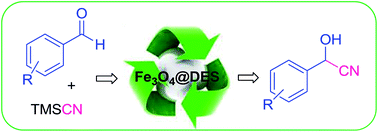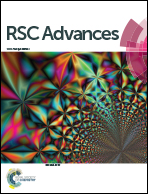A magnetic nanoparticle catalyzed eco-friendly synthesis of cyanohydrins in a deep eutectic solvent†
Abstract
Magnetic Fe3O4 nanoparticles in deep eutectic solvents (DESs) have been regard as excellent catalysts for highly efficient cyanosilylation of various aldehydes and epoxides using trimethylsilyl cyanide TMSCN in high yields with excellent selectivity. Fe3O4 nanoparticles were synthesized and applied as a catalyst for the preparation of a wide variety of cyanohydrins (α-hydroxy nitriles and β-hydroxy nitriles) in readily available urea–choline chloride deep eutectic solvent DES as the most promising environmentally benign and cost-effective green solvent. Magnetic DES operates at very mild reaction conditions and can be easily recycled without significant loss of its catalytic activity.


 Please wait while we load your content...
Please wait while we load your content...